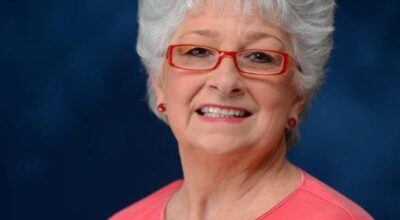COLUMN: Exercise prevents severity of falls
Published 6:00 am Sunday, September 27, 2015
By Patty Hudek
You may have heard how exercise can play an important role in prevention of falls in in the elderly. Exercise is critical for older adults and it can help reduce the severity of injuries when a fall does occur.
One in three Americans age 65 or older suffers a fall each year, and as many as 30 percent of those who fall sustain moderate to severe injuries. Fall injuries not only cost many older people their freedom and mobility, but they also strain the resources of family caregivers and add $30 billion in direct medical costs to the U.S. health care system, a number expected to grow as the population ages.
One study suggests that elderly adults who exercise are not only less likely to fall than their age peers who don’t exercise, but also if they do fall, they’re significantly less likely to get hurt.
Previous studies have shown that regular exercise reduces the chances of falls, but the latest research, an analysis of 17 previous studies involving more than 4,000 elderly participants, showed that elders who exercise suffer 37 percent fewer injuries, are 43 percent less likely to experience a fall that requires hospital admission, and 61 percent less likely to break bones if they do fall. The average age of the people included in the analysis was about 77 years old, and more than three quarters of them were women.
The study authors note: “Even falls causing relatively minor injuries are important to consider, as they too may have serious consequences, such as diminished self-confidence, social isolation and restriction on activity, which in turn will accelerate functional decline and increase the risk of placement in a nursing home.”
“The damage from a fall, both physical and emotional, often cannot be undone,” said Kathy Gunter, associate professor and Extension specialist at Oregon State University. The good news is that falls aren’t inevitable; they’re preventable.
“Several research-based programs, such as ‘Tufts’ Strong Women’ and our own ‘Better Bones & Balance’ have recognized this and strive through exercise-program delivery and instructor training to increase communities’ capacity to provide fall-prevention education and physical activity programming. Including balance-specific challenges and practice is critical to truly prevent falls.
“Bone loading exercises may improve bone mass and/or structure, which is an attractive side effect, but the true benefit — especially for our oldest Americans, is in preventing the fall — or through mobility training and increasing muscle strength — changing the nature of the fall.”
Being able to catch oneself and fall forward — or not at all — is more likely achieved by someone who has sufficient muscle tone and strength, in short, an exerciser.
Anne Lindsay, an associate professor and exercise/health Extension specialist with the University of Nevada Cooperative Extension, said that many changes that occur in the aging process may predispose elders to falls. “Yet all too often, people say, ‘How can we fix the home environment so it’s safer?’ That’s important, yes, but people really need to think about strengthening the aging person so they’re overall less likely to fall or to hurt themselves if they do,” said Lindsay, an exercise physiologist by training. “Oftentimes, people look at the national suggestions for exercise and feel overwhelmed. They say they can’t, so they simply won’t do it.
“I say, you’ve got to start somewhere. Especially for people who sit all day, just get up and do something.”
“I love the online paper, Measuring Functional Fitness in Older Adults. Although it’s written for exercise professionals, it contains a great overview of what’s at stake and what’s needed. There’s a seven-item assessment tool that can work as a self-assessment. People can use it for self-assessment, then work to improve in each of the items.
“The more I look at it, the more I think that just trying to improve in each of the functional fitness categories of the assessment would make a pretty good exercise program in and of itself.”
Of course, make sure to check with your physician to choose an exercise program that is appropriate for you.
Source: http://www.extension.org/pages/70140/exercise-not-only-prevents-falls-but-may-protect-elders-who-do-fall-from-serious-injuries#.VfwuCZdK9_A.
Patty Hudek is with the Mississippi State University Extension Service in the Lafayette County office. You can reach her at p.hudek@msstate.edu.





